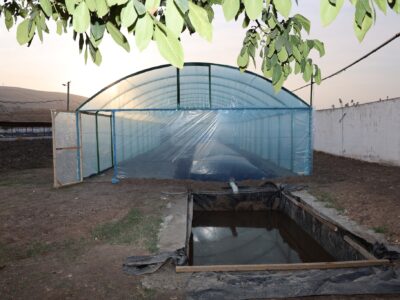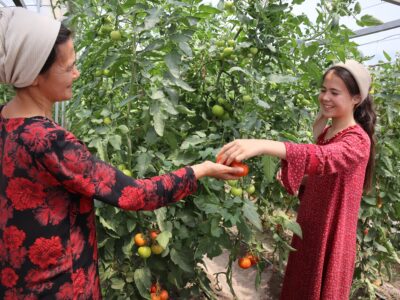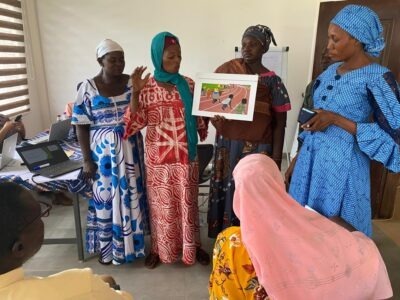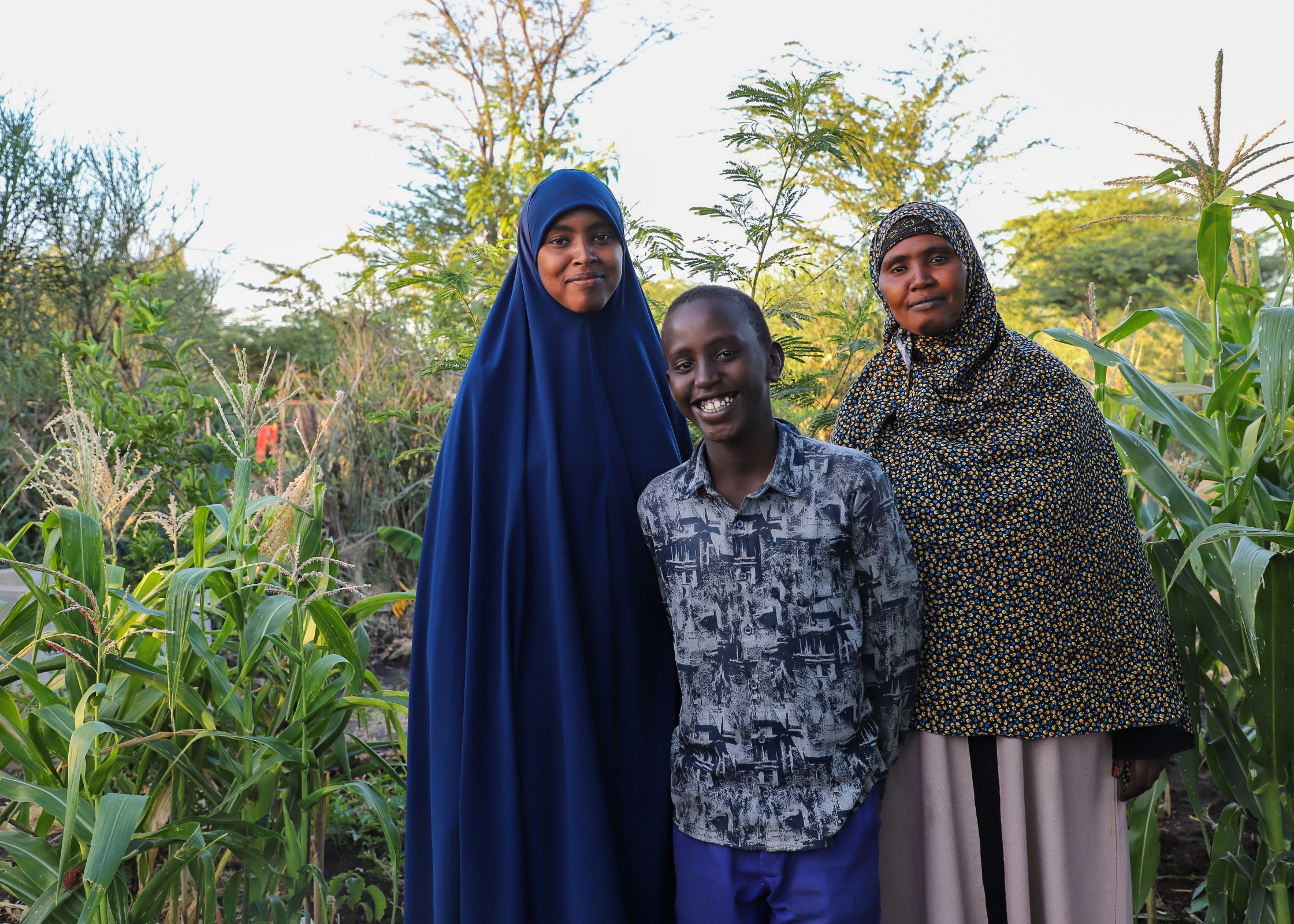
Shinda Abdi lives with her four children in the Mabatini village of the Bulapesa ward, an urban settlement in Northern Kenya’s Isiolo County. The residents here rely heavily on three water sources that are sometimes inaccessible. One is the Isiolo River, which has dried up due to unprecedented drought in the region marked by five consecutive below-average rainy seasons. Another is a pipeline from the county’s water service provider only reaches a few households, who Shinda sometimes must ask for water. The third is the Mabatini borehole, constructed with a solar pumping system and a 300 cubic meter masonry tank. This borehole is only accessible to those living nearby.
Poor access to water led to food scarcity and high food prices in the region. During the drought, Shinda spent $3.50 a week on vegetables to serve with maize meal. After some rain came in the first half of 2023, the cost lowered to $2.00. Even so, it was not enough for her and her children.
“Water was a big challenge, and we could not grow anything,” Shinda said. “We could not afford water for planting. There were times I had to choose between buying food or water. When I bought water, I would prepare rice only for my family, which I know was not a balanced diet.”
In 2023, USAID, through the Feed the Future Kenya Livestock Market Systems Activity, worked together with the county government of Isiolo and the Bulapesa Ward Planning Committee to improve access to water and enable small-scale farmers like Shinda to grow crops. The Activity constructed a 32-cubic meter elevated water tank in Shinda’s village before installing a 1.2-kilometer pipeline from the existing borehole to a waterpoint in the village, reaching 500 households with access to clean water.
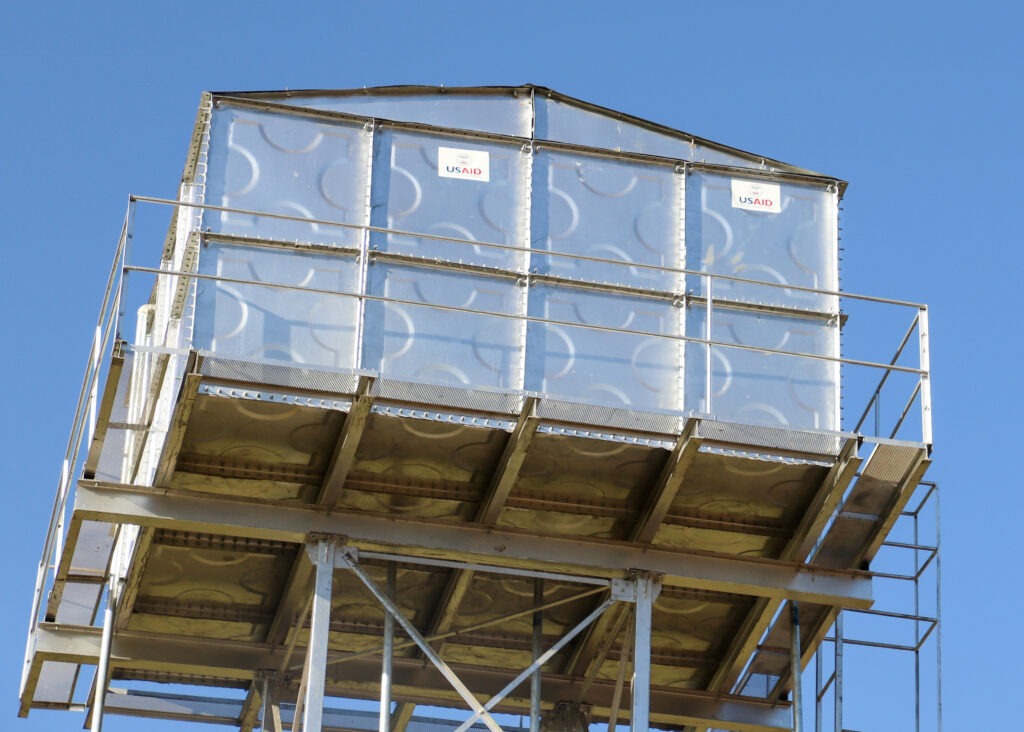
With easy access to clean water, Shinda started a kitchen garden with maize, pawpaws, and vegetables such as sukuma wiki or kale, tomatoes, and pumpkin. She can now provide her family with a balanced diet and save money by not purchasing vegetables from the market.
“My children’s favorite vegetable is kale mixed with pumpkin leaves. They enjoy it, and it is nutritious. Were it not for the water, I would not have planted any of these.”
— Shinda Abdi, a small-scale farmer in Isiolo County
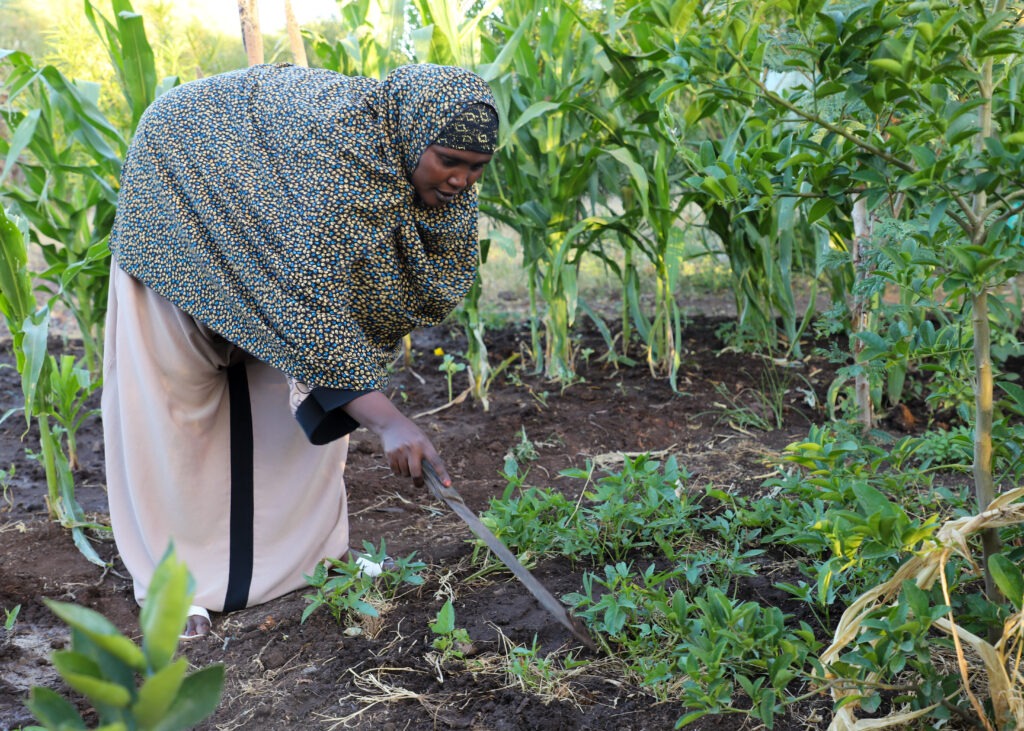
In six months, USAID, in collaboration with county governments and local officials, increased access to clean water for 14,328 people and their livestock in Isiolo, Garissa, Wajir, Marsabit, Samburu, and Turkana counties. The Activity also supported the rehabilitation of 40 community water projects. This included repairing broken parts of borehole systems, installing new pipelines, fixing or constructing new water kiosks, introducing a solar-powered borehole pumping system, and desilting water pans.
These efforts align with Kenya’s Vision 2030 of ensuring that improved water and sanitation are available and accessible to all Kenyans by 2030. To date, 28 million Kenyans (out of 53 million) lack access to safe water.
Learn more about the Activity.
Read more about access to water in Kenya.
Learn more about our work in Kenya.

